World Birth Defects Day Charter Document
1. Background
Birth defects are common, costly, and critical. Worldwide, all countries and their populations are affected by birth defects. To increase global awareness of these conditions and their public health importance, March 3 marks World Birth Defects Day. Twelve international organizations working on birth defects launched the first annual World Birth Defects Day (WBDD) in 2015. The aim of WBDD is to raise awareness of this serious global problem and advocate for increased monitoring of the occurrence of birth defects, research to find causes and improve prevention, and promote care to help children and adults with birth defects improve their quality of life and participation in society. All stakeholders, including individuals with birth defects and their families, the public, governments, non-governmental and civil society organizations, policymakers, researchers, and health care providers around the world, are encouraged to make this a truly inclusive and wide-reaching global awareness event.
2. Purpose
The purpose of WBDD is to:
• Provide a platform to advocate for increased economic, political, and intellectual support to improve birth defects surveillance, prevention, care, and research by global communities and countries
• Raise awareness about the occurrence and impact of birth defects globally
• Raise awareness about the need for early and appropriate lifelong care
• Raise awareness about the ability of people with birth defects to participate in society
• Raise awareness of the global toll of death and disability from birth defects
• Raise awareness about the existing opportunities for people with birth defects to achieve their potential
3. Participating Organizations
The following twelve organizations were instrumental in the launch of the first WBDD on March 3, 2015:
1. U.S. Centers for Disease Control and Prevention (CDC)
2. Estudio Colaborativo Latino Americano de Malformaciones Congénitas (ECLAMC)
3. European Dysmelia Reference Information Centre (EDRIC)
4. European Surveillance of Congenital Anomalies (EUROCAT)
5. International Federation for Spina Bifida and Hydrocephalus (IFSBH)
6. International Clearinghouse for Birth Defects Surveillance and Research (ICBDSR)
7. March of Dimes Foundation
8. Neonatal Alliance – Latin America and Caribbean Newborn Health Alliance
9. National Birth Defects Prevention Network (NBDPN)
10. Pan American Health Organization (PAHO)
11. The Partnership for Maternal, Newborn & Child Health (PMNHC)
12. WHO Regional Office for South-East Asia (SEARO)
These organizations are recognized as the “Charter Partner Organizations” and have the role to provide strategic direction for WBDD and to play an active role in ensuring that WBDD is observed every year with increasing participation and global prominence.
To broaden the organizational base of WBDD, the original twelve organizations welcome others (e.g., parent, government, hospital, or non-profit organizations) to join in planning and implementing WBDD activities. Organizations or groups interested in promoting WBDD may apply to be recognized as “WBDD Participating Organization”. All Organizations (the original twelve and those who will join) will be named “WBDD Participating Organizations” and are expected to participate in planned social media events, promote WBDD with their members and partners, and where possible, plan their own activities.
WBDD Participating Organizations may increase and change every year.
More information about joining efforts to promote WBDD can be found on www.icbdsr.org .
4.Benefits of participation in WBDD activities
By collectively raising global awareness about birth defects, we can begin to address the impact of birth defects on persons affected, their families, and their communities. During the WBDD Campaign, WBDD Participating Organizations spread key messages to help increase awareness and support for developing or strengthening birth defects surveillance, prevention, research, and care.
WBDD Participating Organizations will be recognized through the use of their names/logos on websites, in social media messages, and on print documents.
Additionally, WBDD Participating Organizations gain knowledge and technical expertise by engaging with each other as they participate in WBDD activities. These improved collaborations strengthen the infrastructure needed to accomplish the important aims of WBDD.
5.WBDD Liaisons
Each WBDD Participating Organization will assign at least one staff member or volunteer to be the main liaison responsible for contributing, receiving, and sharing information.
6.Lead Organization
Since initial WBDD planning efforts began in 2014, ICBDSR has served as the lead organization for developing the vision, strategic direction, promotion, and dissemination of activities related to WBDD. ICBDSR will continue to lead all WBDD strategic planning and promotional activities with the support of Charter Partner Organizations until a time when ICBDSR leadership may deem it necessary to pass the leadership responsibility to another Charter Partner Organization. The process of identifying the next lead organization(s) will be determined at that time by Charter Partner Organizations.
